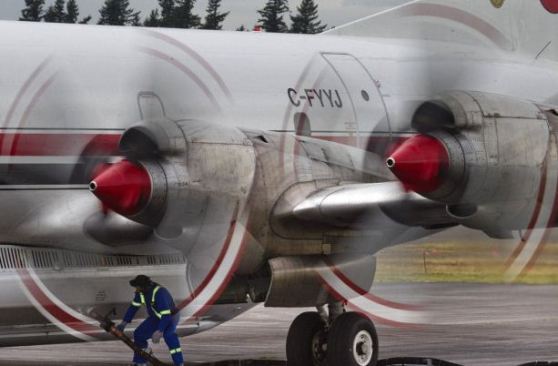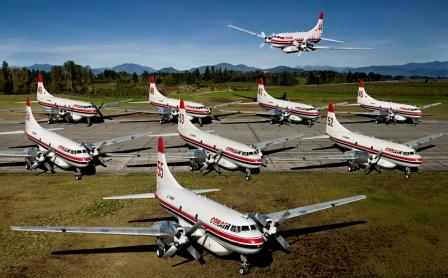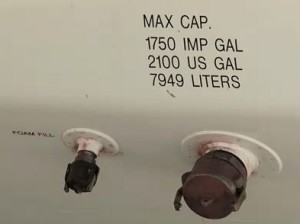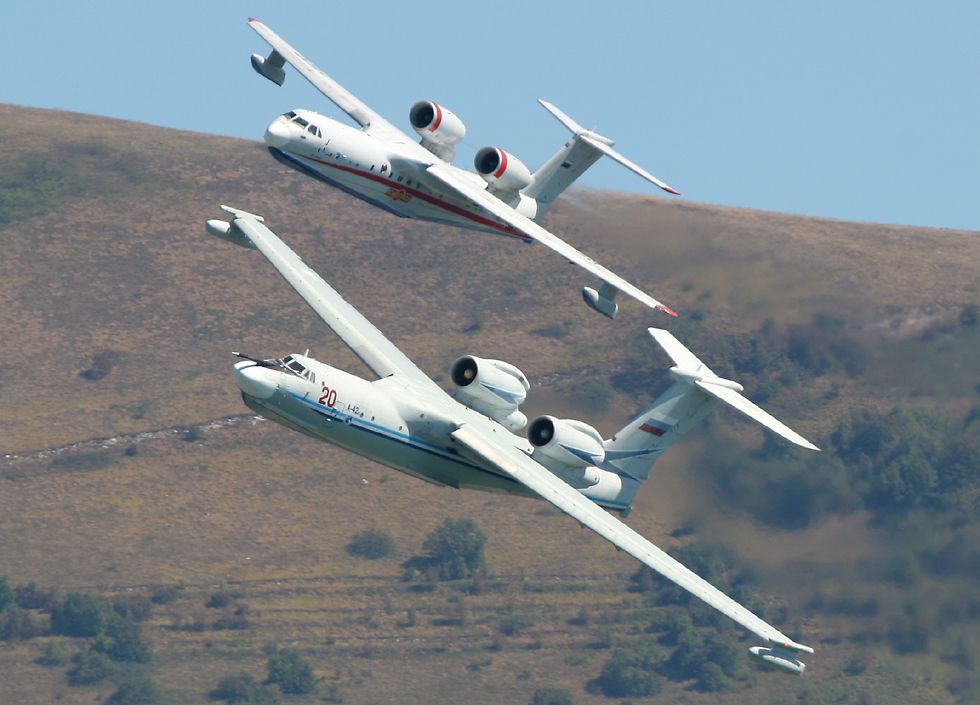In the aftermath of Sunday’s tragic air tanker accidents in which two pilots working for Neptune Aviation were killed, and a second air tanker made an emergency landing on disabled landing gear, the U.S. Forest Service announced today that they have “shored up” the air tanker fleet by temporarily adding some aircraft. They are arranging for two CV-580 air tankers to become available on a temporary basis. One is under contract with the state of Alaska and the other is being borrowed from the Canadian Interagency Fire Centre. The CV-580s can carry 2,100 gallons of retardant, about the same as the P2Vs that currently comprise eight of the nine air tankers on exclusive use contracts with the USFS, but they are speedier, cruising 115 mph faster than the P2Vs.
CAL FIRE reached out to the USFS and allowed the federal agency to arrange to bring on two CAL FIRE air tankers, presumably S-2Ts, one month earlier than they would have come on duty otherwise. These two aircraft will be used in California. An S-2T carries 1,200 gallons of retardant.
The USFS is also bringing on five large Type 1 helicopters earlier than previously scheduled.
When I saw the headline on the USFS news release announcing they were “shoring up” the air tanker fleet, I wondered if they were finally announcing that they have awarded multiple contracts for “new generation” air tankers. The solicitation for the next-gen air tankers closed in February, but as usual, the U.S. Forest Service office of Fire and Aviation Management has difficulty making decisions. There was also the possibility that they were going to announce exclusive use contracts or call when needed activations for the very large air tankers, such as the DC-10’s or the 747, but that did not happen either.
This “shoring up” tactic is smoke and mirrors — a band-aid on a serious case of analysis-paralysis cancer in the agency. It is simply a distraction from the real issue.
We have tried to find out the details of the USFS’ solicitation for a sixth air tanker study, which closed April 20, but calls to Kellan Logan, the USFS contracting officer in charge of the solicitation, have not been returned.
UPDATE AT 9:13 a.m. MT, June 7:
We heard from Mr. Logan today about the sixth air tanker study, which has been awarded.






